I bet you’ve been searching Google about hair loss, and all you’ve found are endless product advertisements. You’ve probably clicked on several of them, each with countless reviews, leaving you confused about what to buy. Well, I have news for you – while you’re on the right track by researching, focusing solely on spending money without understanding your specific needs isn’t the best approach. After all, what’s the point of buying a product that affects hormone X or vitamin Y if your problem lies with Z? My friend, your first step should be education. You need to understand how vast this topic is. Hair loss has been extensively studied for decades at a very deep level, and now you have the chance to learn everything you need right at your fingertips.
You’ve probably clicked on several of them, each with countless reviews, leaving you confused about what to buy. Well, I have news for you – while you’re on the right track by researching, focusing solely on spending money without understanding your specific needs isn’t the best approach. After all, what’s the point of buying a product that affects hormone X or vitamin Y if your problem lies with Z? My friend, your first step should be education. You need to understand how vast this topic is. Hair loss has been extensively studied for decades at a very deep level, and now you have the chance to learn everything you need right at your fingertips.
What You Need to Know First: Why Does Hair Loss Occur?
While this isn’t everything, here’s definitely a good initial guide for your complete understanding. I know that if you’re dealing with this problem, you want to know everything, discover what’s ideal for you, and act as quickly as possible.
Hormones
If you’re noticing thinning at your crown or temples, or if male pattern baldness runs in your family, hormonal factors might be your primary concern. I’ve been there, and I understand the frustration of seeing these changes in the mirror.Want to dive deeper into how hormones affect your hair loss?
I’ve prepared a comprehensive guide that explains everything about hormonal impact on hair loss and what you can do about it. You’ll find it in our dedicated hormone section.The main hormone involved is dihydrotestosterone (DHT), which can bind to hair follicle receptors and trigger miniaturization.
This process gradually shrinks your hair follicles, leading to thinner hair and eventually hair loss.
The good news? This mechanism is well-understood thanks to decades of research by institutions worldwide.The scientific community has made tremendous strides in understanding hormonal hair loss. Numerous studies from leading research institutions have shown that managing hormone levels can significantly impact hair retention and regrowth.
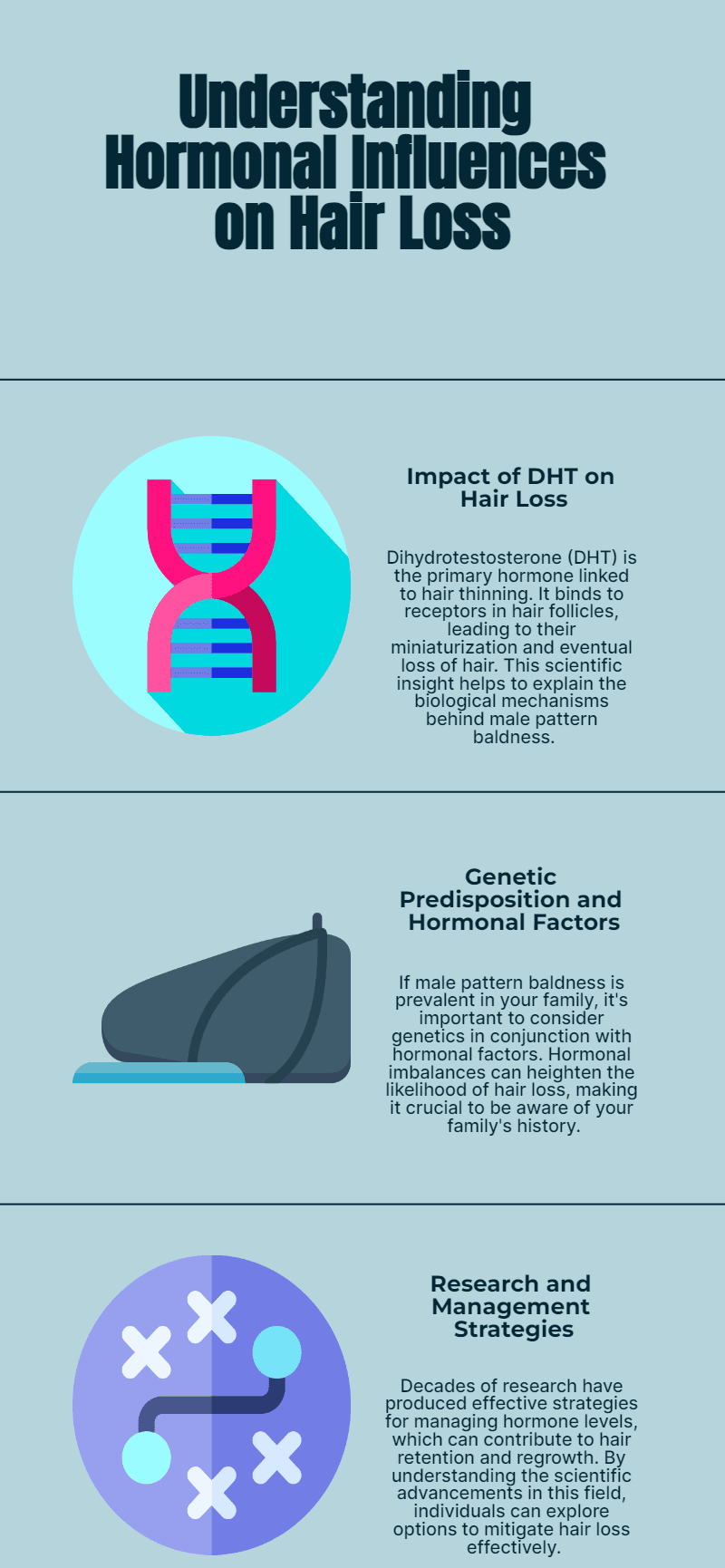
Genetic Predisposition
If you’ve noticed that hair loss seems to run in your family, particularly on either your mother’s or father’s side, genetic predisposition might be your primary concern.
I see this pattern frequently among my readers.I’ve created an in-depth article specifically about genetic hair loss patterns and how to work with (or against) your genes. You’ll find detailed information about inheritance patterns and targeted solutions.
Your genes can influence how sensitive your hair follicles are to certain hormones, particularly DHT. This sensitivity determines how your follicles react to normal hormone levels in your body.
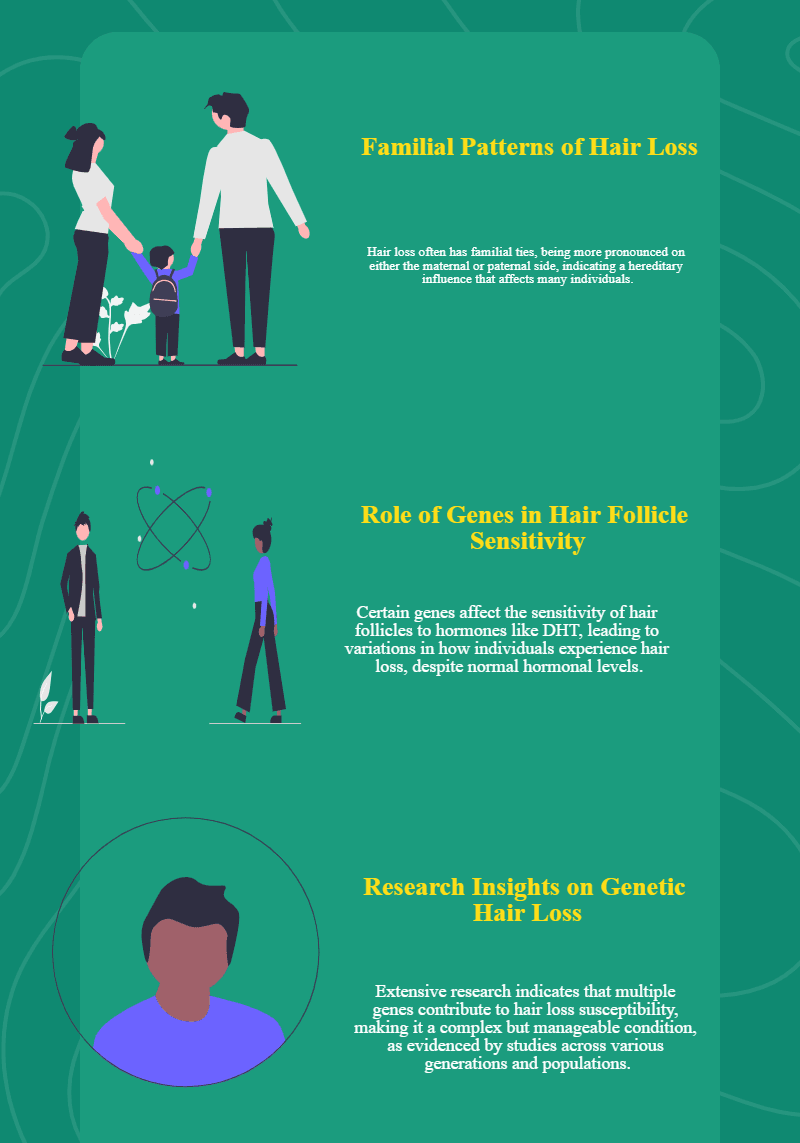
Research has shown that multiple genes contribute to this predisposition, making it a complex but manageable condition.The medical community has extensively studied genetic hair loss patterns, with research spanning multiple generations and diverse populations. While we can’t change our genes, we can certainly work with them through various proven interventions.
Scalp Tension
If you’re experiencing tightness in your scalp, or if you spend long hours at a desk with poor posture, this could be a significant factor in your hair loss journey. I’ve studied hundreds of cases where scalp tension plays a crucial role.
I’ve put together an extensive guide about the relationship between scalp tension and hair loss, including practical exercises and techniques you can implement immediately. You’ll find all the details in our dedicated section.
Research shows that chronic scalp tension can restrict blood flow and nutrient delivery to your hair follicles. This mechanical stress triggers inflammatory responses and can activate pathways that lead to follicle miniaturization. The fascinating part is how this connects to our modern lifestyle.
Multiple studies from leading dermatological institutes have demonstrated the impact of mechanical stress on hair growth. The good news is that there are several proven techniques to address this, from scalp exercises to posture improvements.

Blood Flow
Have you noticed your scalp feeling cold to the touch, or does your family have a history of circulation issues? Poor blood flow to the scalp might be contributing to your hair loss. I’ve researched this extensively and found it’s often overlooked.
I’ve created a comprehensive article about blood flow optimization for hair growth, complete with practical strategies and scientific backing. You’ll want to check out our full guide on this topic.
Proper blood circulation is crucial because it delivers oxygen and nutrients to your hair follicles while removing waste products. When blood flow is restricted, your follicles can’t receive the nourishment they need for optimal growth. This creates a cascade effect that can accelerate hair loss.
The medical community has conducted numerous studies showing the relationship between blood flow and hair growth. Techniques to improve scalp blood flow have shown promising results in clinical trials worldwide, and I’ll share more about these specific approaches in our detailed guide.
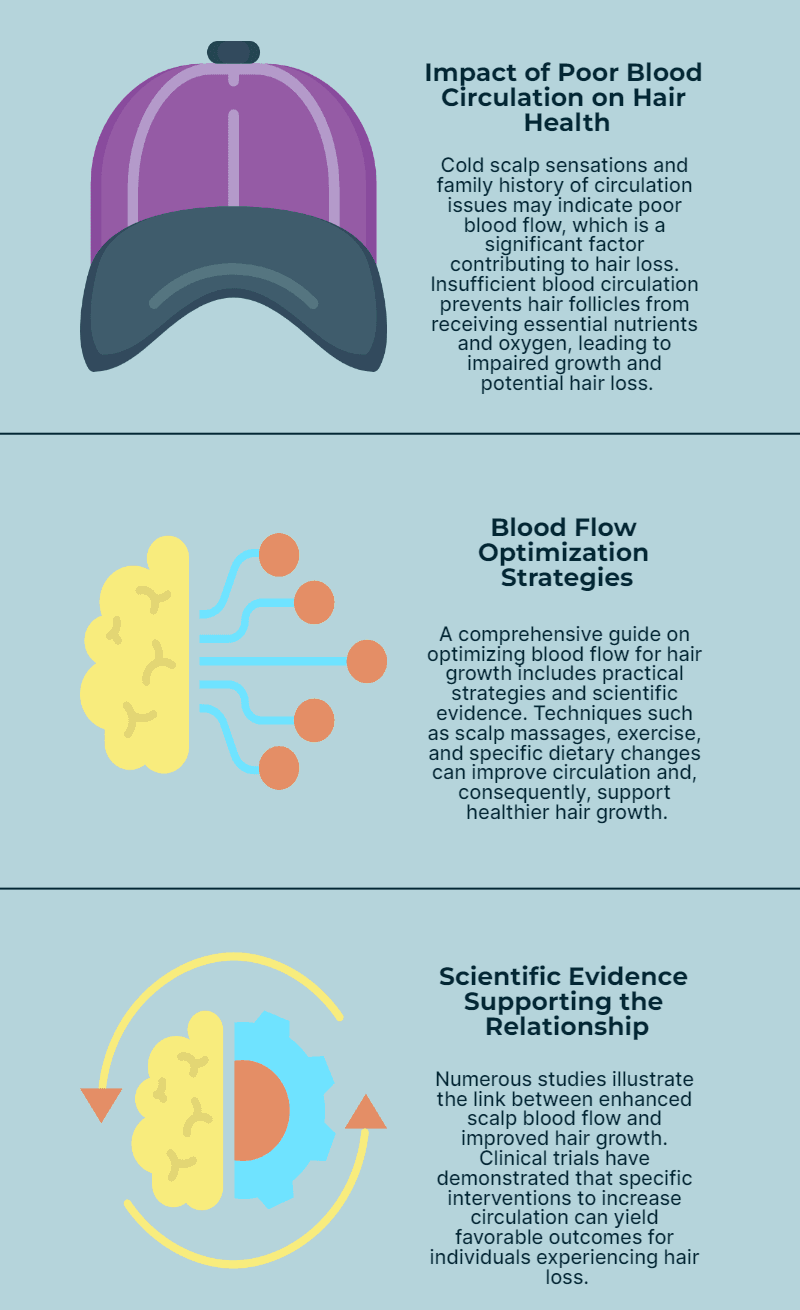
Prostaglandins
If you’ve noticed inflammation or sensitivity in your scalp, or if you’ve used certain medications that affected your hair growth, prostaglandins might be playing a key role in your hair loss. This biochemical pathway is particularly fascinating.
I’ve compiled an extensive analysis of how prostaglandins influence hair growth and loss, including the latest research findings. You’ll find the complete breakdown in our dedicated prostaglandin guide.
Prostaglandins are lipid compounds that act as powerful signaling molecules in your body. PGD2 (Prostaglandin D2) has been found to inhibit hair growth, while PGE2 and PGF2α promote it. Research has shown that men with pattern baldness often have elevated levels of PGD2 in their scalp tissue, up to three times higher than those without hair loss.
Groundbreaking studies from the University of Pennsylvania and other leading institutions have mapped out the entire prostaglandin pathway in hair follicles. This understanding has led to targeted treatments that work by manipulating these molecular signals.
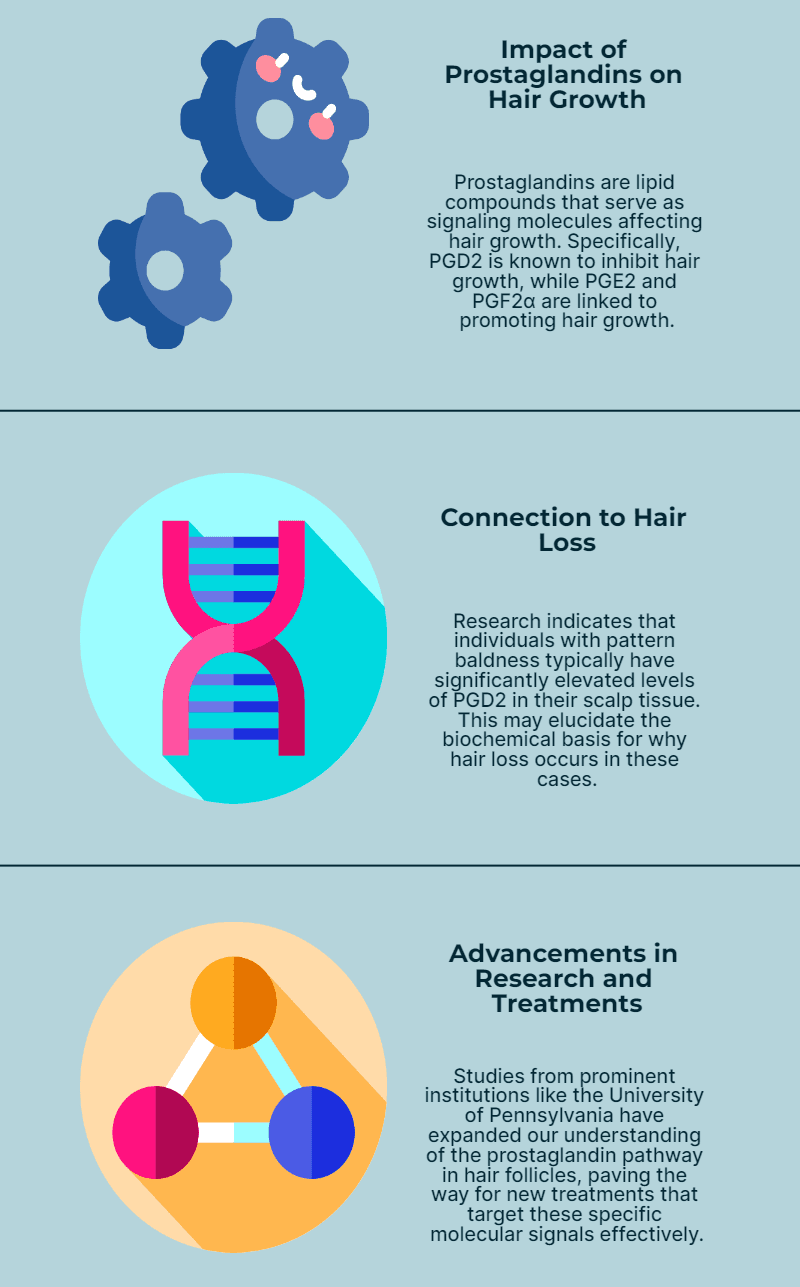
Prolactin Receptors
For those of you fascinated by the deeper molecular mechanisms of hair loss, prolactin receptor activity presents one of the most intriguing areas of research. I’ve spent considerable time studying this lesser-known but crucial aspect.
I’ve prepared a detailed scientific analysis of prolactin receptor function in hair loss, complete with research citations and pathway explanations. You’ll find this comprehensive information in our specialized section.
The interaction between prolactin receptors and hair follicle regulation involves complex signaling cascades that influence the hair growth cycle. Studies have shown that elevated prolactin receptor activity can disrupt the normal growth phase (anagen) and prematurely push follicles into the regression phase (catagen). This process involves cross-talk with other signaling pathways, including JAK-STAT and Wnt/β-catenin.
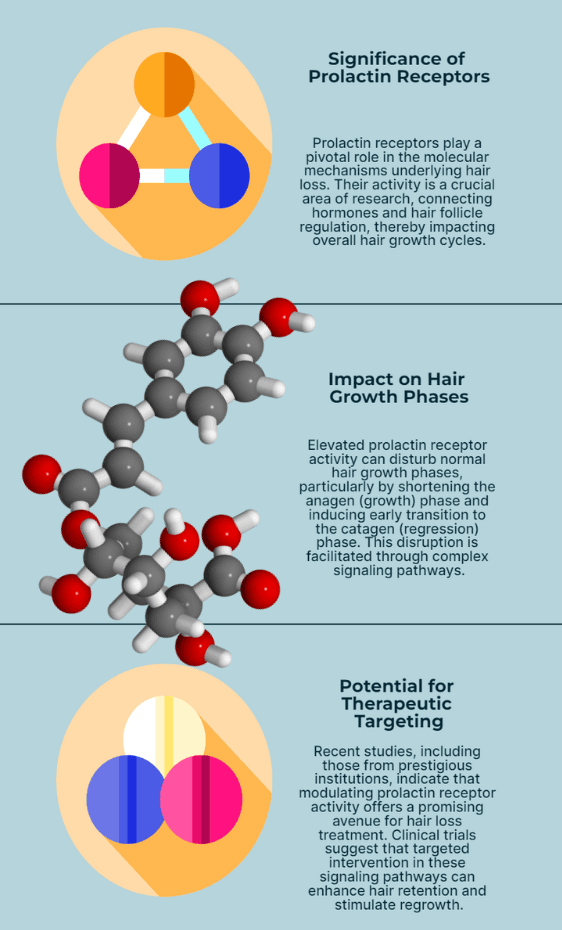
Your Journey to Understanding Hair Loss Starts Here
Don’t feel overwhelmed by all this information. Here on our site, you’ll find detailed articles about each of these factors, broken down into easy-to-understand sections. Remember, knowledge is your most powerful tool in this journey. Take your time to read, learn, and understand your specific situation.
The Path Forward
Understanding hair loss is complex, but it’s far from impossible. As you’ve seen, there are multiple factors that can contribute to your situation, and they often work in combination. The good news is that once you understand your specific triggers, you can develop a targeted approach that actually works for your case.
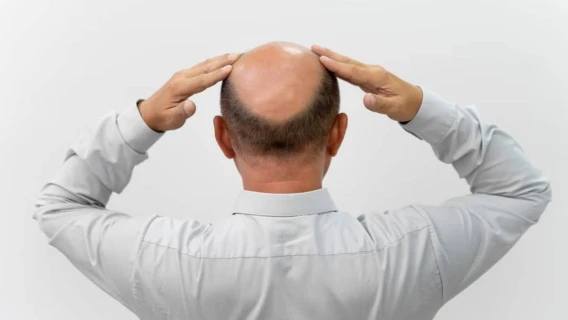
[…] you’ve made it this far, you’ve already learned about the main causes of hair loss from our previous article. So, how are you planning to address these issues? Before rushing to buy miracle products online, […]
[…] loss, we cover essential causes and prevention strategies. You can read about it in our article, Fighting Hair Loss? The First Step is Education, Not Product Purchases. It provides insights into understanding hair loss […]
[…] Saymon Vanz No commentsSummary MapHormonal Hair Loss is a pillar content section of: Click-for-Health GuideIf you’ve landed on this page, you’re truly a knowledge seeker who values detailed […]
[…] side. Before diving deeper, we highly recommend checking out our foundational guide “Fighting Hair Loss: The First Step is Education, Not Product Purchases” to understand how genetics fits into the bigger picture of hair […]